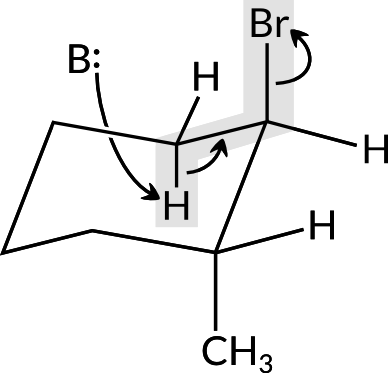Reasons to Use (or to Avoid Using) an Image
This guide is available as a Word document or PDF.
Images can be effective for explaining concepts that cannot be described adequately in words alone (Ainsworth & Loizou, 2003). The terms “image,” “picture,” and “graphic” in this post refer to static visual representations that include, but are not limited to, drawings, photographs, microscope images, and screenshots. Choosing images to include in the course material is not trivial because having more pictures does not always mean better learning.
Other types of visual representation that incorporate quantitative information, namely charts, graphs, and tables, are discussed in the post “Visualizing Quantitative Information.” Concept maps are covered in the post “Concept Mapping as a Review Activity.”
 |
 |
Is the Image Related Directly to Learning Outcomes?
If a concept can be explained clearly in a reasonable amount of written words, then do not include the image (Kalyuga & Sweller, 2021). Avoiding unnecessary images in the course material would lessen the amount of work in course development to make or find media. Another benefit is the reduction of cognitive burden on students to reconcile the information in the images with the rest of the course material (Kalyuga & Sweller, 2021).
Decorative graphics and seductive graphics are not directly relevant to the learning outcomes and should be omitted (Mayer, 2021). The purpose of decorative graphics is to make the educational material look aesthetically pleasing without necessarily being related to the lesson topic. In contrast, seductive graphics are, indeed, related to the lesson topic and are included in educational materials with the intention to engage the learner with interesting information. However, the information is extraneous to the learning outcomes. Despite the advice to avoid decorative or seductive graphics, such media continue to persist in educational resources.
Whether or not an image is helpful for learning also depends on context. When teaching students to read the word “cow,” including a picture of a cow did not help with recognizing the sequence of letters “c-o-w” (Miller, 1937). Therefore, the picture of a cow should be omitted here. However, learning foreign vocabulary was improved when combining the text definition with supporting graphics compared to the text definition alone (Mayer, 2021). Perhaps we can apply this finding to learning technical words, which may seem as unfamiliar as words in a foreign language. Consider using pictures to enhance object recognition, especially in the case of terminology for objects or concrete ideas (Figure 1).
 |
 |
Do the Learning Outcomes and Assessments Require Drawing or Interpreting Images?
If so, then include these types of images. For instance, if students are asked to recognize key artists and artworks that address Northwest Coast Indigenous cultures (Figure 2), then the course material should have examples of these artists and their works so that students can be familiar with them. It can be difficult to describe comprehensively an artwork in words, which is why a visual representation can be effective. Note that Figure 2 does not represent the wide array of artists and artworks and is limited to demonstrating how pictures, such as painting or photography, can be used in educational resources.
Does the Subject Matter Involve the Arrangement of Multiple Objects in Space?
Learning objectives that depend on spatial reasoning include, but are not limited to, the following subjects:
- Calculus — determine the limits of integration in two- or three-dimensions.
- Anatomy — identify the relative location of bodily organs.
- Organic chemistry — predict reactivity according to the spatial organization of substituents in a molecule.
The course reading and images can work together. The course reading highlights relevant details about the locations of objects and clarifies misinterpretations of the images. The benefit of having images is that multiple objects can be displayed simultaneously in a single image. The image reduces some of the burden on the learner to hold textual information in working memory while constructing the mental model (Fiorella & Mayer, 2021).
Pictorial summaries, when provided to students rather than drawn by students, are especially beneficial for application-based learning objectives (Leopold et al., 2013). Drawing, as an exercise, has been shown to benefit learning. However, pictorial summaries may be helpful alternatives if drawing pictures imposes another cognitive load on students that competes with textual comprehension (Leutner & Schmeck, 2021).
Is the Image Similar To, or Have Redundant Information As, Another Image?
Showing more than one image in spatiotemporal proximity about the same topic, called multiple representation (Ainsworth, 2021), should be avoided unless these images are specified by the learning objectives. Multiple representation requires the viewer to reconcile how each image relates to one another and to the rest of the course, thereby imposing additional cognitive load. If each additional representation repeats the same information in a redundant manner, then a single representation of the subject matter is sufficient.
Organic chemistry is a particular subject that uses multiple representations of molecules to convey nonredundant information (Figure 3). Distinct representations highlight specific aspects of a molecule, such as geometry, chemical reactivity, and thermodynamic stability. Moreover, specific representations may be favoured because of convenience. When learning objectives require students to draw and interpret distinct molecular representations, it is necessary to include these multiple representations in the course material.
A |
B | C |
Is the Image Consistent with the Information in the Course?

Avoid pictures that have typographical errors, factual errors, inconsistencies contrary to the information presented elsewhere in the course material, or irrelevant information to the course. These problems can be difficult to avoid in graphics from open educational resources compared to graphics custom-made for the course content. Figure 4 has an example of a Creative Commons image with minor errors that appears in multiple open educational resources. A possible solution may be editing the graphic, if allowed by copyright rules and technological capabilities, to correct errors or inconsistencies, exclude irrelevant parts of the picture, or fill in relevant details. If editing the graphic is not possible, then the figure caption is an opportunity to inform students of the specific parts of the graphic to correct or disregard.
Is the Image Just…Bad?
Avoid poor-quality graphics (e.g., unlabelled, abstract line-drawings (Schmeck et al., 2014)) that have limited ability to improve learning. Search for other images with better quality, edit the poor-quality image, or make a new image.
Summary
- If a concept can be explained sufficiently in words, then accompanying images are not necessary.
- Images should be consistent with the overall information presented in the course and have direct relevance to the learning objectives, such as recognizing objects, interpreting visual information, illustrating spatial relationships, or summarizing concepts.
- Avoid multiple representation, unless the representations are relevant to the learning objectives.
- Do not include images that are solely for decoration or to entice the reader.
Media Attributions
The featured image is a composite of the following:
- Left: “Self-Portrait” by Judith Leyster (1630), via National Gallery of Art, is in the public domain.
- Right: “Self-Portrait” by Élisabeth Louise Vigée Le Brun (1790), via Wikimedia Commons, is in the public domain.
Unless otherwise noted, all figures were created by Jung-Lynn Jonathan Yang under a CC BY-NC-ND 4.0 license.
- Figure 1:
- Top: “Petroglyphs, two” by Lone Primate (2006), via Flickr, is used under a CC BY-NC-SA 2.0 license.
- Bottom: “Petroglyph – Thorsen Creek” by Lloyd Guenther (2007), via Flickr, is used under a CC BY-NC-SA 2.0 license.
- Figure 2:
- Top: “Totem Poles, Kitseukla” by Emily Carr (1912), via Obelisk Art History, is in the public domain.
- Bottom: “Bill Reid Haida Gail 01” by Boberger (2006), via Wikimedia Commons, is used under a CC BY-SA 3.0 license.
- Figure 4: “Messenger RNA is a copy of…” by Rice University (n.d.), via OpenEd CUNY, is used under a CC BY 4.0 license.

